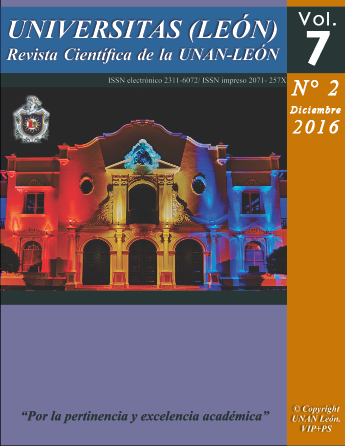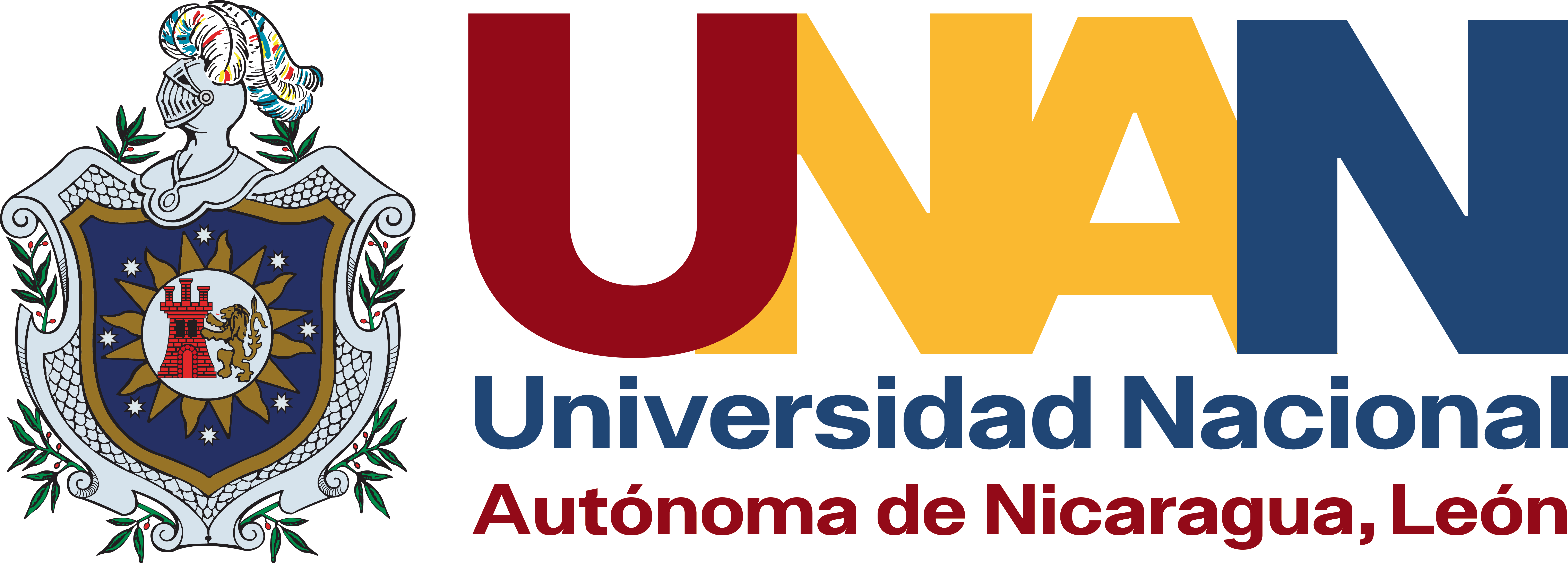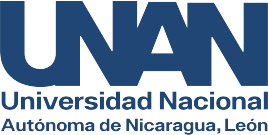Soil quality and diversity of macrofauna in cacao plantations and forest fragments in Waslala, RAAN, Nicaragua (May-December, 2010)
DOI:
https://doi.org/10.5377/universitas.v7i2.13868Keywords:
Soil health, Diversity indexes, Fertility, Agroforestry systemsAbstract
The physical and chemical properties and diversity of soil macrofauna were evaluated in 36 cacao plantations and 4 forest fragments in the municipality of Waslala, RAAN, Nicaragua. At the center of each cacao plantation, a temporary measuring plot of 1000 m2 (20 x 50 m) was established. Five soil samples were taken at two depths (0-10 cm, 10-20 cm) and the physical and chemical properties of each were analyzed. The soil macrofauna was collected in three points of the plot, both in the litter and in the soil. At each point, a monolith (25x25x25 cm) was extracted and all organisms smaller than 2 mm in diameter were quantified and identified up to the taxonomic level of order. Based on physical-chemical indicators, 4 groups of soil quality were formed: the +Base group was classified as "Very Good", the ±bases and C groups are considered "Good" and the -Base group "Fair". All the macro and micro elements of the soil were found far from the critical ranges for the crop. 24 functional groups of macrofauna were identified, being the most abundant Formicidae (36%) and Oligochaetas (26%). The highest density of macrofauna was found in the quality group ± base (1174.8 individuals m-2) and the lowest density was recorded in the quality group C (929.3 individuals m-2). It is suggested to study the nutrient balance of the SAF-cocoa from Waslala to determine if the current fertility of the soil guarantees the sustainable production of cocoa.
Downloads
References
Arango, M. (2007)., Zonificación agroecológica del café en puerto rico y análisis estructural y de composición de especies arbóreas presentes en el agroecosistema cafetero. Tesis para MSc. Universidad de Puerto Rico Recinto Universitario de Mayaguez.
Bonilla, R, Roncallo, B., Jimeno, J., García, T. (2008). Producción y descomposición de la hojarasca en bosques nativos y de Leucaena sp., en Codazzi, Cesar. Revista Corporación Colombiana de Investigación Agropecuaria (Corpoica). Ciencia y Tecnología Agropecuaria, Colombia. https://doi.org/10.21930/rcta.vol9_num2_art:113
Cerdas, R, (2008)., Calidad de suelos en plantaciones de cacao (Theobroma cacao), banano (Musa AAA) y Plátano (Musa AAB). (Tesis de MSc. Catie, Turrialba, Costa Rica. Talamanca, Costa Rica
.Cerón, P., Montenegro, S., Noguera, E. 2008. Macrofauna en suelos de bosque y pajonal de la Reserva Natural Pueblo Viejo, Nariño, Colombia. Revista Académica Coloma 32(125). https://doi.org/10.31910/rudca.v12.n1.2009.647
Deheuvels, O; Avelino, J; Cerda, R; Pérez, G; Rousseau, G. (2009)., "Protocolos de investigaciones: Componente I: Productividad y Ambiente. Documento Proyecto Cacao Centroamerica (PCC).
George, A., (2006). Estudio comparativo de indicadores de calidad de suelo en fincas de café orgánico y convencional. Tesis MSc.
InfoStat. 2010. Universidad Nacional de Córdoba. 2004. Manual del usuario. Córdoba, Argentina, Editorial Brujas. 318 p.
Linares, D; Tapia, S; Gamarra, O; Torrez, J. (2006)., Macrofauna del suelo en diferentes sistemas de uso de la tierra en el parque nacional Tingo Maria Huanuco - Perú. Universidad Nacional Agraria de la Selva.
Pashanasi, B. (2001)., Estudio Cuantitativo de La Macrofauna del suelo en diferentes sistemas de uso de la tierra en la Amazonía Peruana. Folia Amazonica 12: 1-2.
Philip, et al.(2003)., Observaciones sobre el sistema mucuna-maíz en laderas de Waslala, región atlántica de Nicaragua. Agronomía Mesoamericana. Cartago - Costa Rica. 7 pp.
Suatunce, P., Somarriba, E., Harvey, C., Finegan, B. (2004)., Diversidad de escarabajos estiercoleros en el bosque y en cacaotales con diferente estructura y composición florística en Talamanca. Revista Agroforestería en las Américas 41-42: 69-72
Downloads
Published
How to Cite
Issue
Section
License
Copyright (c) 2016 National Autonomous University of Nicaragua, Leòn

This work is licensed under a Creative Commons Attribution-NonCommercial-ShareAlike 4.0 International License.
Copyright © 2025 Universitas (León), Revista Cientifíca de la UNAN-León. Academic Direction. Research Department. Publication and Scientific Event Unit.










